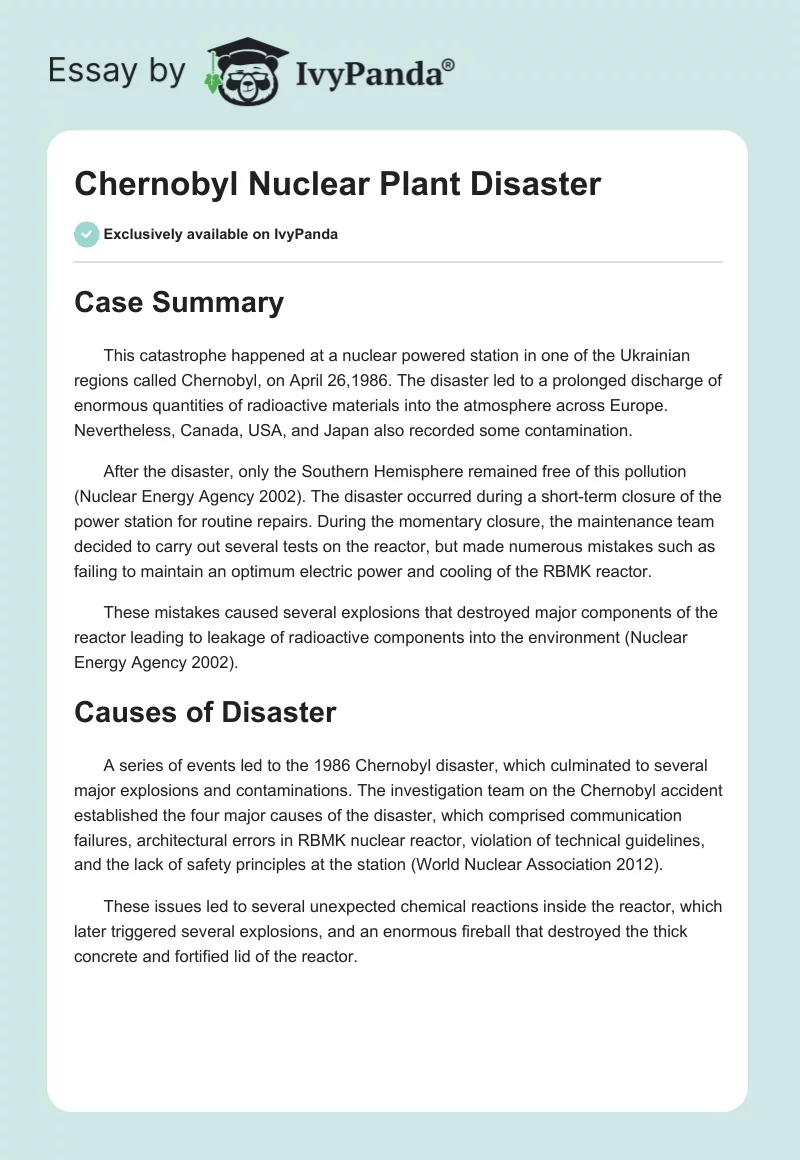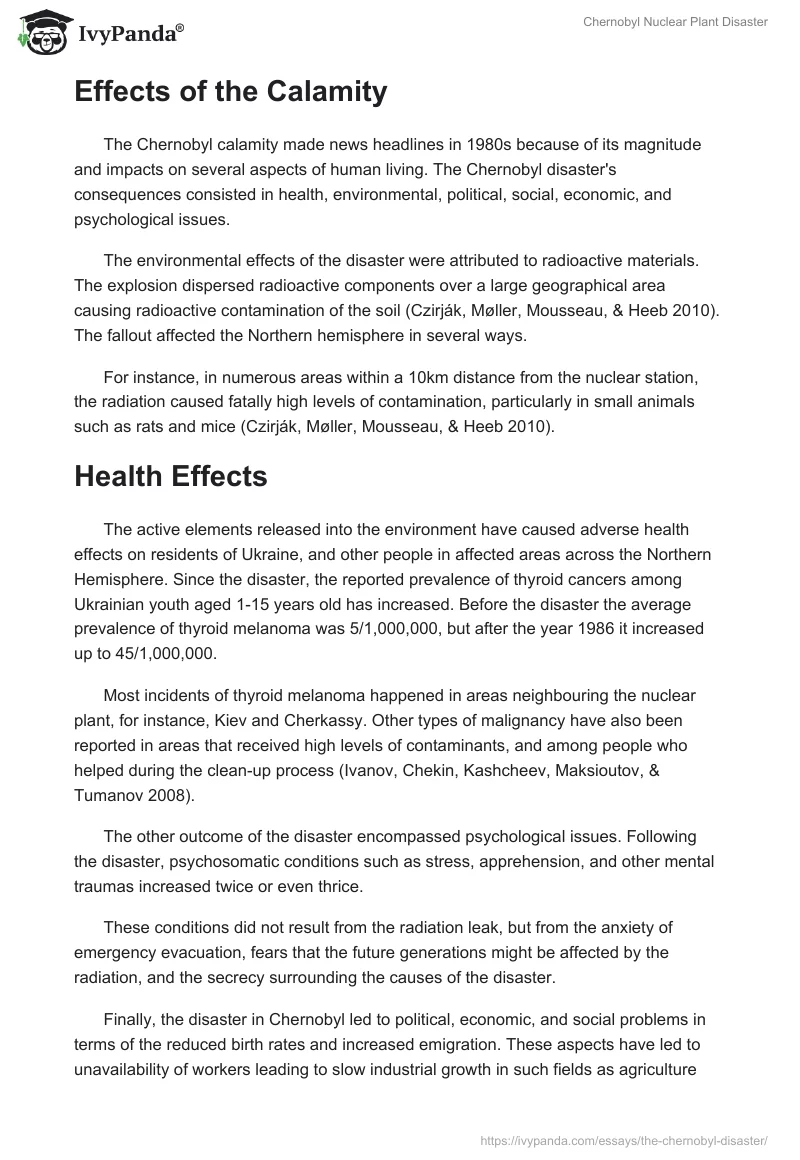Case Summary
This catastrophe happened at a nuclear powered station in one of the Ukrainian regions called Chernobyl, on April 26,1986. The disaster led to a prolonged discharge of enormous quantities of radioactive materials into the atmosphere across Europe. Nevertheless, Canada, USA, and Japan also recorded some contamination.
After the disaster, only the Southern Hemisphere remained free of this pollution (Nuclear Energy Agency 2002). The disaster occurred during a short-term closure of the power station for routine repairs. During the momentary closure, the maintenance team decided to carry out several tests on the reactor, but made numerous mistakes such as failing to maintain an optimum electric power and cooling of the RBMK reactor.
These mistakes caused several explosions that destroyed major components of the reactor leading to leakage of radioactive components into the environment (Nuclear Energy Agency 2002).
Causes of Disaster
A series of events led to the 1986 Chernobyl disaster, which culminated to several major explosions and contaminations. The investigation team on the Chernobyl accident established the four major causes of the disaster, which comprised communication failures, architectural errors in RBMK nuclear reactor, violation of technical guidelines, and the lack of safety principles at the station (World Nuclear Association 2012).
These issues led to several unexpected chemical reactions inside the reactor, which later triggered several explosions, and an enormous fireball that destroyed the thick concrete and fortified lid of the reactor.
Effects of the Calamity
The Chernobyl calamity made news headlines in 1980s because of its magnitude and impacts on several aspects of human living. The Chernobyl disaster’s consequences consisted in health, environmental, political, social, economic, and psychological issues.
The environmental effects of the disaster were attributed to radioactive materials. The explosion dispersed radioactive components over a large geographical area causing radioactive contamination of the soil (Czirják, Møller, Mousseau, & Heeb 2010). The fallout affected the Northern hemisphere in several ways.
For instance, in numerous areas within a 10km distance from the nuclear station, the radiation caused fatally high levels of contamination, particularly in small animals such as rats and mice (Czirják, Møller, Mousseau, & Heeb 2010).
Health Effects
The active elements released into the environment have caused adverse health effects on residents of Ukraine, and other people in affected areas across the Northern Hemisphere. Since the disaster, the reported prevalence of thyroid cancers among Ukrainian youth aged 1-15 years old has increased. Before the disaster the average prevalence of thyroid melanoma was 5/1,000,000, but after the year 1986 it increased up to 45/1,000,000.
Most incidents of thyroid melanoma happened in areas neighbouring the nuclear plant, for instance, Kiev and Cherkassy. Other types of malignancy have also been reported in areas that received high levels of contaminants, and among people who helped during the clean-up process (Ivanov, Chekin, Kashcheev, Maksioutov, & Tumanov 2008).
The other outcome of the disaster encompassed psychological issues. Following the disaster, psychosomatic conditions such as stress, apprehension, and other mental traumas increased twice or even thrice.
These conditions did not result from the radiation leak, but from the anxiety of emergency evacuation, fears that the future generations might be affected by the radiation, and the secrecy surrounding the causes of the disaster.
Finally, the disaster in Chernobyl led to political, economic, and social problems in terms of the reduced birth rates and increased emigration. These aspects have led to unavailability of workers leading to slow industrial growth in such fields as agriculture and exportation. Moreover, radioactive contaminants reduced available agricultural land, and the food cultivated in Chernobyl cannot be sold because people fear to take it.
List of References
Czirják, G, Møller, P, Mousseau, T, & Heeb, P 2010, ‘Associated with Feathers of Barn Swallows in Radioactively Contaminated Areas around Chernobyl’, Microbial Ecology,vol. 60 no. 2, pp. 373-80.
Ivanov, K, Chekin, S, Kashcheev, V, Maksioutov, M, & Tumanov, K 2008, ‘Risk of thyroid cancer among Chernobyl emergency workers of Russia’, Radiation and Environmental Biophysics, vol.47 no. 4, pp. 463-7.
Nuclear Energy Agency 2002, Chernobyl: Assessment of Radiological and Health Impact. Web.
WorldNuclear Association 2012,Chernobyl Accident 1986. Web.


